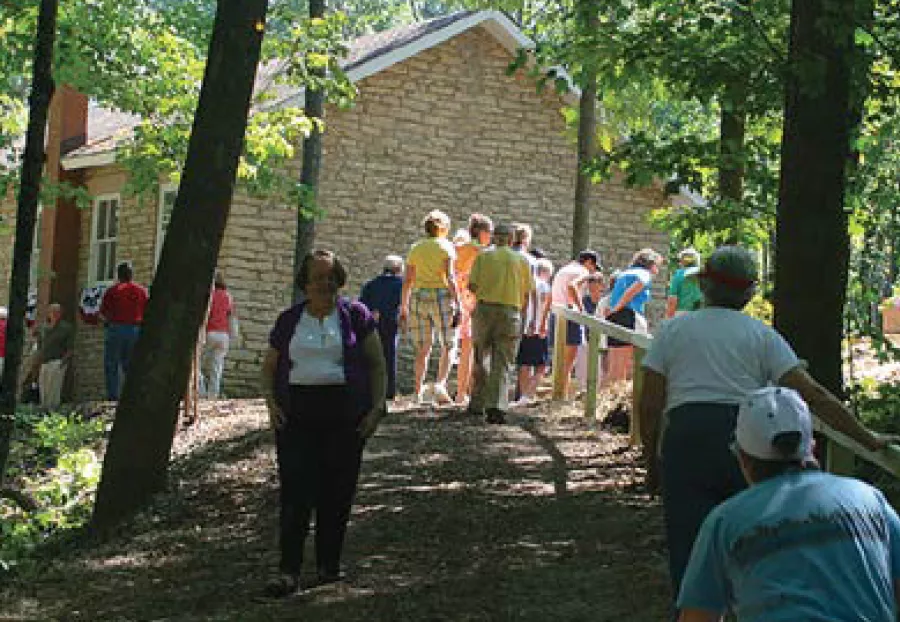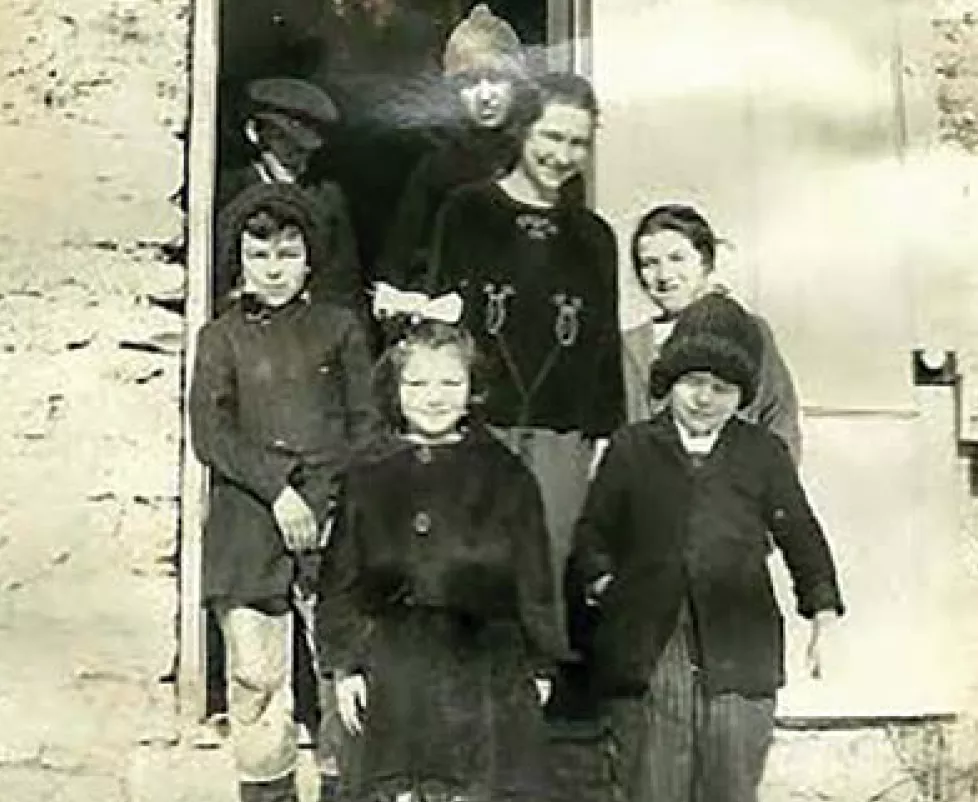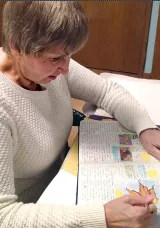The city of Galena sits in the northwest corner of Illinois, off the Mississippi tributary. It’s a small, historic town that was once home to Ulysses S. Grant, who had settled there with his family in the mid-19th century.
Grant’s house remains almost untouched. In fact, most of Galena’s 19th century buildings are still well preserved. P.J. HarteNaus, a 35-year retired elementary school teacher from Glen Ellyn, Ill., helps maintain the town’s history.

In 2000, as a graduate student and fifth-grade teacher, she took on her last assignment: “Go into the field and find something that might benefit children of all ages.”
HarteNaus decided she would explore the unglaciated area of Galena. There, she learned of a school on top of a hill that was built in 1859, and remained open for nearly 85 years. In 1943, Belden School was boarded up and abandoned.
She also learned of Bob Kleckner—known as “Big Bob”—a local farmer who lived in the area. He was described as “gruff,” but he and HarteNaus became fast friends.
“Big Bob” Goes Dumpster Diving
Kleckner shared with the former teacher how he had salvaged two discarded journals from the trash. One dated back to the 1870s. The journals held the untold stories of events and activities within the schoolhouse.
“He gave me these journals,” says HarteNaus, “and I read them from cover to cover. I also read between the lines for story ideas.” The farmer also gave HarteNaus old pictures he had in his garage and the telephone numbers of the last people who attended Belden School in the 1940s.
The former students, who are now in their 80s and 90s, told the “tales of their antics at Belden School, their jobs on their family farms, and their long walks through the valleys,” wrote HarteNaus on her website. “Many had fond
memories of their teachers and assignments given to them during those years. They also spoke lovingly of the school...as it was the center of their lives.”
The journals and the interviews HarteNaus had with the former students served as the basis for her award-winning book series Belden Boy.
Her first two books, Belden Boy—the Adventures of Peter McDugal and My Sometimes Pal, are fictional stories of two young boys set in the 1800s. McDugal and his friend, Franky, have their struggles with bullying. “It’s the same story, same pranks, but different time,” says HarteNaus who focused on bullying because it’s an important topic in schools.
HarteNaus’ third book, Backwoods Bully, is written from the perspective of Franky who doesn’t understand why everyone thinks he’s a bully. The books are written for first- through sixth-grade curricula and are tied to state core standards. The Belden Boy series has won awards, too, including the 2012 Country School Association of America Award and the National Children’s Literature CLIPPA Award.
“What I did was pull the Belden School stories together, my own history with bullying, and what I experienced with my students all those years of teaching,” says HarteNaus.
The Assignment that Keeps on Giving
For HarteNaus’ graduate class, she wrote a proposal of how the school could be used for school-aged children, and created a mock limestone miniature of what Belden School would look like once restored.
She presented it to the Galena Territory Association, which was instrumental in restoring the school. They liked the idea.
A committee was formed and the group went to work raising money to restore the abandoned structure. In September, 2009, Belden School reopened its doors.
“It’s been a wonderful thing,” says HarteNaus, who before her retirement would take her students to Belden School.
Students experienced lessons in the style of the 1800s: The clang of a bell would start the school day and students spent the day working on reading and “arithmetic, not math, lessons,” says HarteNaus. Snacks would be taken out from a woven basket, and children would play stick-ball. The veteran teacher would enlist the help of a colleague to play the role of Peter McDugal, who would go down to the creek and fetch some water.
During the summer months, the building also serves as a writing camp for young writers. The Belden Boy Writing Camp is a three-day program that sticks to good old-fashioned pencil and paper: no computers, no technology, and no WiFi.
HarteNaus, along with a literacy team, guides students to write and illustrate their own children’s story that’s later turned into a hard-cover book. The school is open every two weeks from May to October for tourists, too. HarteNaus would eventually like to open the school to teachers who want to write their own books.
“Teachers ask me how I wrote these books,” shares HarteNuas. “I’m here for the teachers. Now that I’m retired, I would love to conduct more lessons for adults—maybe have a summer camp for teachers... and have a four-day experience of writing.”
This one-room schoolhouse from the past seems to have quite a future!



